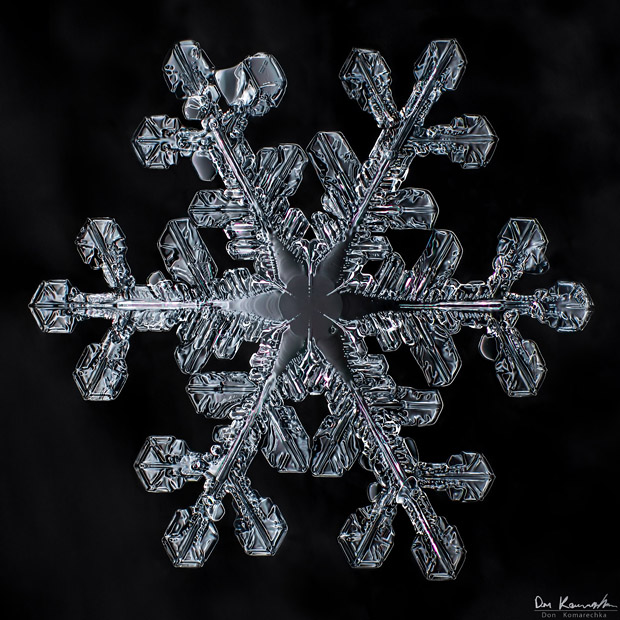The manual for the MP-E 65mm lens I use has an aperture conversion chart, which allows me to calculate the “effective aperture at given settings and magnifications. For example, setting the lens to a 5:1 magnification and f/16 will result in an aperture of f/96. At that aperture, diffraction limiting plays a huge role in giving you a blurry image, and your snowflake still wouldn’t be in focus from front to back.My solution is to slowly move the camera forward and backward through the focus of the snowflake, firing off as many images as possible. I may take up to 200 images of the same crystal, and then choose between 30-40 of them to combine together. Because I’m shooting hand-held, the frames I need are often unevenly spaced and out of order.
Each image is done entirely hand-held. No tripods or focusing rails are used in any of my images. I’m often asked why, and the answer is: necessity. If I took the time to line the subject up perfectly on a tripod, the snowflake will have either melted, blown away or be smothered by other falling snow.
